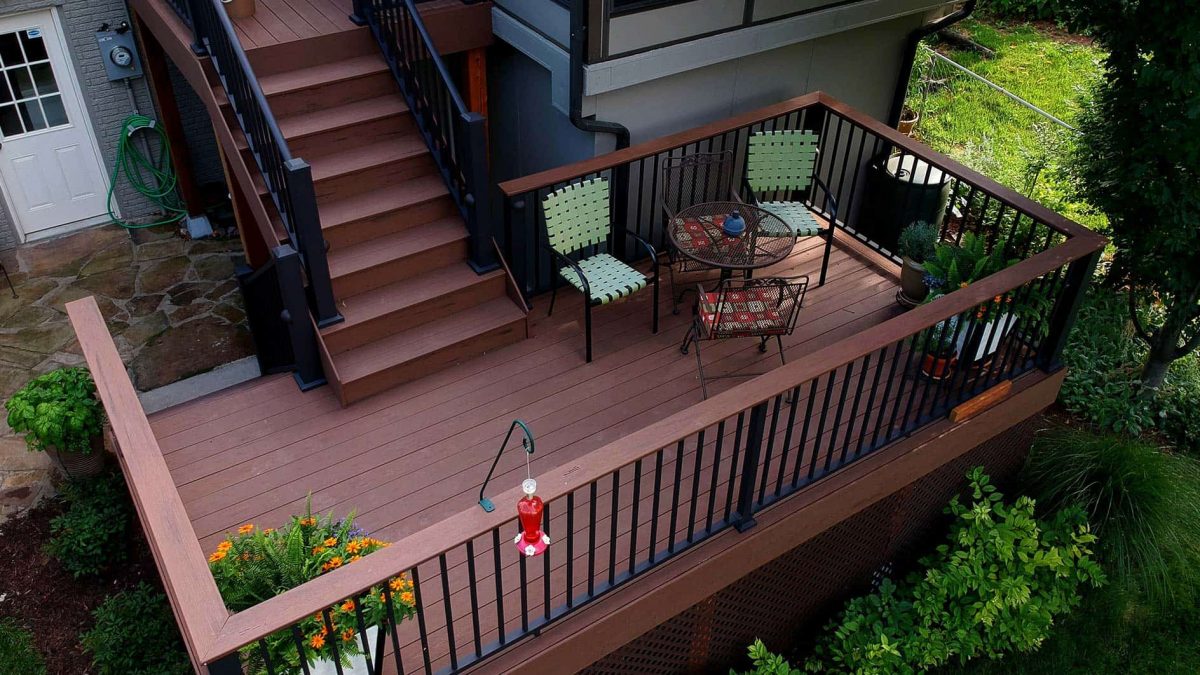Composite deck boards appeal due to their affordability and durability. The composite deck board’s main component is recycled plastic, and it can be applied with a variety of finishes. Composite decking works better for an outdoor living area that requires a strong material that can withstand the elements year-round. This article will give you insight into how this durable material can be used for your decking project.
What Are Composite Deck Boards?
Composite deck boards are a durable and low-maintenance material choice for your deck. This guide will explain everything you need to know about composite deck boards, including how they’re made, the benefits of using them, and some tips for installation and care.
Composite deck boards are made from a mixture of wood fibers and plastic polymers. The fibers provide strength and stability, while the plastic resists moisture and rot. This makes composite decking an ideal material for outdoor use, as it is durable and easy to care for.
There are many benefits to using composite deck boards. They require little maintenance, resist fading and staining, and are available in a variety of colors and styles. Composite decking is also eco-friendly, as it is made from recycled materials.
Installing composite decking is similar to installing wood decking. The boards can be nailed or screwed into place using special fasteners. Once installed, composite decks require little more than occasional sweeping and cleaning with soap and water.
With proper care, composite decks can last for decades. Thanks to their durability and low maintenance requirements, they are a great investment for any home owner.
Pros of Composite Decking Boards
Composite decking boards are a durable material that is made to last. They are also easy to maintain and can resist rotting, splintering, and warping. In addition, composite decking boards are available in a variety of colors and styles to suit any taste.
Cons of Composite Decking Boards
Composite decking boards have a few disadvantages when compared to traditional wood boards. First, they are more expensive. Composite boards also require more upkeep and care than wood boards, as they are susceptible to staining and fading. Finally, composite boards can sometimes be less durable than wood boards, especially in extreme weather conditions.
Types of Decking Board Products: Wood and PVC
There are two types of decking board products available on the market today: wood and PVC. Both materials have their own unique benefits that make them ideal for different applications. Here is a closer look at each type of material to help you decide which one is right for your next decking project:
Wood Decking Boards:
-Are natural and eco-friendly
-Are strong and durable
-Are easy to install
-Require little maintenance
PVC Decking Boards:
-Are weather and water resistant
-Are slip resistant
-Do not require painting or staining
How to Choose the Best Composite Decking Product
Composite decking is a man-made product that has been designed to provide a durable, low-maintenance surface for outdoor living. It is made from a mix of wood fibers and plastic resins that are molded into boards or planks. The boards can be square or grooved and are available in a variety of colors.
When choosing composite decking, it is important to select a product that will suit your needs and budget. There are many different brands and types of composite decking on the market, so it is important to do your research before making a purchase. Consider the following factors when choosing composite decking:
- Cost: Composite decking ranges in price from $2 to $30 per square foot, depending on the brand and type. Be sure to compare prices from multiple retailers before making a purchase.
- Installation: Composite decking is easy to install and can be done by DIYers with some basic carpentry skills. However, if you hire a professional installer, expect to pay $15 to $25 per square foot for labor costs.
- Maintenance: Composite decks require little maintenance other than occasional cleaning with soap and water or a pressure washer. They are also resistant to rot, mold, and insects.
- Durability: Composite decks are very durable and can last 20 years or more with proper care and maintenance.
- Appearance: Composite decks come in a variety of colors and
How to Install a Composite Decking Board
Installing a composite decking board is not as difficult as it may seem. In fact, it is a relatively simple process that can be completed in just a few hours. Here are the steps you need to take to install a composite decking board:
- Choose the location for your decking board. It is important to choose a level spot that will support the weight of the decking board. If you are unsure about the best location, consult with a professional contractor or landscape designer.
- Mark the outline of the decking board on the ground with stakes and string. This will help you keep the boards in place while you work. For more information on Composite Decking Boards, visit this Website.
- Drill pilot holes into the ground at each corner of the decking board’s outline. These holes should be slightly smaller than the diameter of the decking screws you will be using.
- Insert anchors into the pilot holes and screw them into place.
- Place your composite decking board on top of the anchors and screw it into place with decking screws. Be sure to countersink the screws so they are flush with the surface of the board.
- Trim any excess material from around the edges of the board with a utility knife or saw
